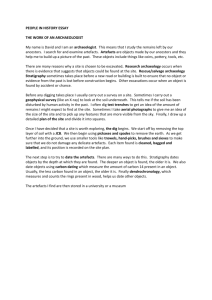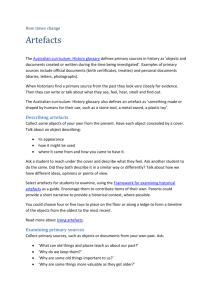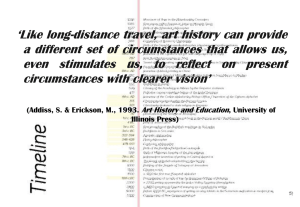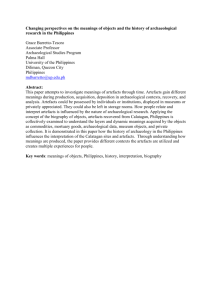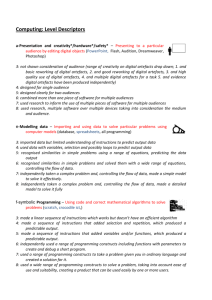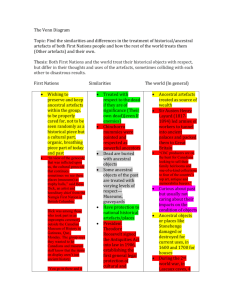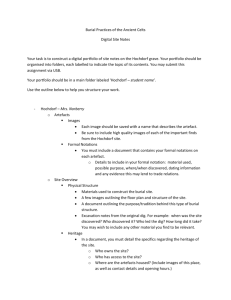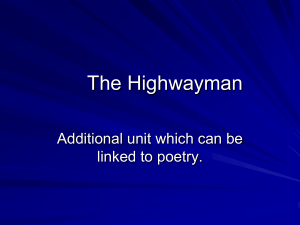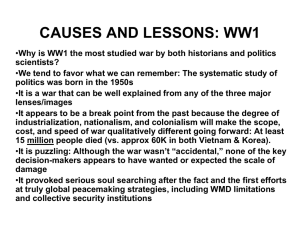soldiers possessions
advertisement
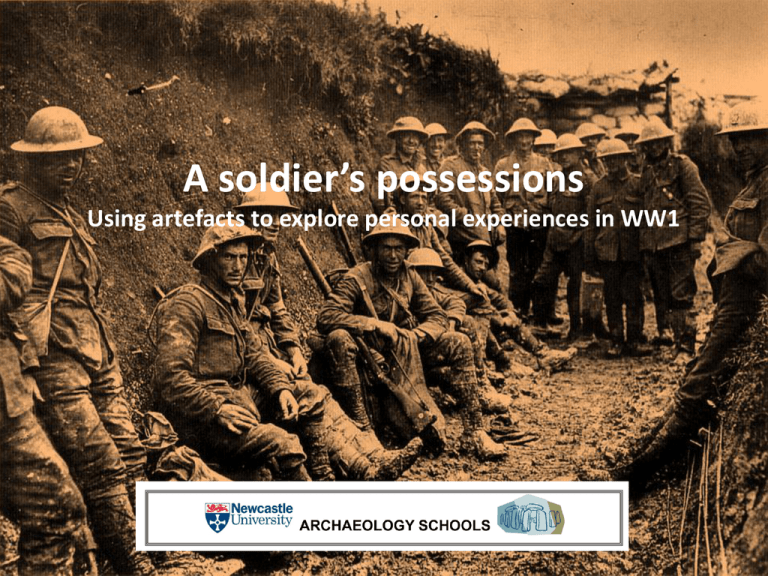
A soldier’s possessions Using artefacts to explore personal experiences in WW1 What will we learn? This activity will help you to learn that: •Artefacts (objects made by people) are historical sources – information about the past doesn’t just come from written sources! •Artefacts can be read– even when they don’t have writing on them - in order to gain information about the past •Artefacts provide lots of different kinds of information about the experiences of soldiers fighting in WW1 ‘Reading’ artefacts • No words here – but I bet you know exactly what these two objects are, and what they mean to the people who use them • In other words..you can ‘read’ the messages they are sending out • All objects (archaeologists call them artefacts) say things about the people and the societies who use them, or want them Have a go at reading these: What does owning (or wanting) these say about you? What signals or messages are they sending out to other people? Reading artefacts from WW1 This artefact was made in 1916, by an Australian army driver. His name was Ewen MacDonald. He fought at Passchendaele, and survived the war. What is it? What is it made from? Think about what this object might tell us about this man, and his war. Some things to think about: Trenches Alcohol Forgetting Off duty Friends and comrades Class Review of the Artefacts Four tables, four objects, four groups One object on each table 3 minutes then move on! These are real objects from WW1 – be careful with them! Things to think about . . . • Do you know what it is? • What is it made of? • What can you see? Draw it! • What do you think it’s for? • What information does it contain? Object 1 - What are they for? - Why are there two? - What are they made Why are they different colours? from? WHY?? • Identity tags started to be used by Britain in 1907 • Originally soldiers had just one tag • They received two from September 1916 • Why? • Originally made of aluminium • Asbestos was cheaper - and could survive fire Reading the details • • • • • • • • P Yeomans 2740738 CoE The tags indicate some or all of these: Number Rank Name Regiment Religion Object 2 - What is it made of? - Tell me about the pictures on it… What do they mean? - What words are included? - What might it have meant to the soldiers? Who might she be? M is for… Imperium Britannicum? These are the names of countries – why might these names be here? Christmas – what do we most like about Christmas? • Princess Mary Tin • 17 year-old Princess Mary (daughter of King George V) created the ‘Sailors and Soldiers fund’ • Donations from the public to send soldiers on the Front a parcel on Christmas day 1914 • Items in the tin included chocolate, pipes, cigarettes, tobacco, pencils, sweets. • In each corner are the names of the allies, with France and Russia named either side • 355,000 were successfully delivered by Christmas That’s me! Object 3 - What was it for? - Why do you think it was important? - What can you see? • This is a Sweetheart Brooch • Like a wedding ring, it marked a person out as being connected to someone who was away • A symbol of national pride and patriotism • A way of connecting the people on the home front and on the front line • In this case the dagger represents the bayonet that a soldier would have attached to the end of his gun • The name ? • The trench area where he was fighting (Dixmude) Dixmude • The ‘trenches of death’ • Held by the Belgians for four years – the battle of the Yser Object 4 • What is it made of? • What would it be used for? - Who made it? The decoration here was made using repousse technique: the maker has used a small tool (perhaps a nail or the needle from his sewing kit) to punch little dents in some parts of the shell, leaving a central image to stand out. Soldiers had a lot of spare time between fighting and to entertain themselves would often create their own souvenirs by recycling objects that were readily available for them: wire, used cartridges and bomb shells Trench Art Which bit of the shell was used for our example? Reading the details • • • • • • • • • • 37-85 = 37mm howitzer shell. (18)85 = the year this shell was introduced PDPs = Pinchart Denys, Paris 362 = Manufacturing lot number 9.17= September 1917 Think: why did poppies become the symbol of WW1? Artillery shells were often used to make flower vases: their size and shape was just right for this But there are other reasons too • Holly is symbolic of immortality • Evergreen • Lilies (or is it a thistle?) symbolise purity and innocence – and also death • The Cross of Lorraine is a heraldic (coat of arms) symbol of the Lorraine region of France. This is where some of the worst trench warfare occurred • It’s a symbol associated with the Catholic church A soldier’s possessions Artefacts (human-made objects) are historical sources – information about the past doesn’t just come from written sources!
